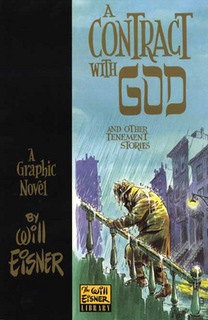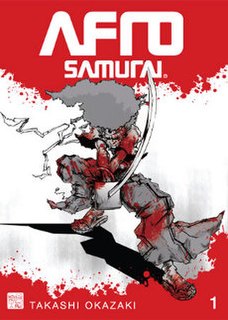
A comic book, also called comicbook, comic magazine or simply comic, is a publication that consists of comics art in the form of sequential juxtaposed panels that represent individual scenes. Panels are often accompanied by descriptive prose and written narrative, usually, dialogue contained in word balloons emblematic of the comics art form. Although comics have some origins in 18th century in Eastern Asia, comic books were first popularized in the United States and the United Kingdom during the 1930s. The first modern comic book, Famous Funnies, was released in the US in 1933 and was a reprinting of earlier newspaper humor comic strips, which had established many of the story-telling devices used in comics. The term comic book derives from American comic books once being a compilation of comic strips of a humorous tone; however, this practice was replaced by featuring stories of all genres, usually not humorous in tone.

Manga are comics or graphic novels originating from Japan. Most manga conform to a style developed in Japan in the late 19th century, and the form has a long prehistory in earlier Japanese art. The term manga is used in Japan to refer to both comics and cartooning. Outside of Japan, the word is typically used to refer to comics originally published in the country.
Bandes dessinées, abbreviated BDs and also referred to as Franco-Belgian comics, are comics that are usually originally in French and created for readership in France and Belgium. These countries have a long tradition in comics, separate from that of English-language comics. Belgium is a bilingual country, and comics originally in Dutch are culturally a part of the world of bandes dessinées; these are translated to French and concurrently sold to the French-reading audience.

A graphic novel is a book made up of comics content. Although the word "novel" normally refers to long fictional works, the term "graphic novel" is applied broadly and includes fiction, non-fiction, and anthologized work. It is, at least in the United States, typically distinct from the term "comic book", which is generally used for comics periodicals and trade paperbacks.
Disney comics are comic books and comic strips featuring characters created by the Walt Disney Company, including Mickey Mouse, Donald Duck and Uncle Scrooge.

An American comic book is a thin book, averaging 32 pages and containing comics. While the form originated in 1933, American comic books first gained popularity after the 1938 publication of Action Comics, which included the debut of the superhero Superman. This was followed by a superhero boom that lasted until the end of World War II. After the war, until superheroes were marginalized, the comic book industry rapidly expanded and genres such as horror, crime, science fiction and romance became popular. The 1950s saw a gradual decline, due to a shift away from print media in the wake of television and the impact of the Comics Code Authority. The late 1950s and the 1960s saw a superhero revival and superheroes remained the dominant character archetype throughout the late 20th century into the 21st century.

In comics, a one-shot is a work published as a single stand-alone story, rather than as part of an ongoing series. One-shots date back to the early 19th century, published in newspapers, and today may be in the form of single published comic books, parts of comic magazines/anthologies or published online in websites. In the marketing industry, some one-shots are used as promotion tools that tie in with existing productions, movies, video games or television shows.
Donaldism is the fandom associated with Disney comics and cartoons. The name refers to Donald Duck and was first used by author Jon Gisle in his essay Donaldismen from 1971 and expanded in his book Donaldismen in 1973.

Hannes Hegen was a German illustrator and caricaturist and is most famous for creating the East German comic book Mosaik and its original protagonists, the Digedags.

Jo Chen is an American comic book artist and writer best known for her highly detailed painted comic book covers. In the Japanese comic industry she is also known by the pen name TogaQ and is known as Jun Togai.
German comics are comics written in the German language or by German-speaking creators, for the major comic markets in Germany, Austria, and Switzerland, with spill-overs into the neighboring, but lesser, comic markets of Liechtenstein, Luxembourg and German-speaking Belgium.
The Max & Moritz Prize is a prize for comic books, comic strips, and other similar materials which has been awarded at each of the biennial International Comics Shows of Erlangen since 1984. It is open to all material published in Germany.
Manga, or comics, have appeared in translation in many different languages in different countries. France represents about 40% of the European comic market and in 2011 comic represented 40% of the comics being published in the country. In 2007, 70% of the comics sold in Germany were manga. In the United States, manga comprises a small industry, especially when compared to the inroads that Japanese animation or Japanese video Games have made in the USA. One example of a manga publisher in the United States, VIZ Media, functions as the American affiliate of the Japanese publishers Shogakukan and Shueisha. Though the United Kingdom has fewer manga publishers than the U.S, most manga sold in the United Kingdom are published by U.S publishing companies like Viz media and Kodansha Comics which are in turn owned by their Japanese counterparts. Alongside the United Kingdom, the U.S manga publishers also sell their English translated manga in other English speaking nations like Canada, Australia and New Zealand with manga being quite popular in Australia compared to other English speaking countries.

Afro Samurai is a Japanese seinendōjinshi manga series written and illustrated by manga artist Takashi Okazaki. It was originally serialized irregularly in the avant-garde dōjinshi manga magazine Nou Nou Hau from November 1998 to September 2002. Inspired by Okazaki's love of soul and hip hop music and American media, it follows the life of Afro Samurai who witnessed his father, Rokutaro killed by a male gunslinger named Justice while he was a child. As an adult, Afro sets off to kill Justice and avenge his father.

DC Universe Presents is the name of two DC Comics publications. The first was part of the UK 'Collector's Edition' line of DC Comics published by Titan Magazines. Beginning March 2007, it was originally titled Superman Legends and was published alongside Batman Legends. Titan also later released several other DC comics following on from the success of Superman and Batman Legends. The book was retitled as DC Universe Presents at issue 33 but continued the issue count of Superman Legends, despite the change in title and in some of its content. The title reprinted DC Comics from the United States including Justice League, Superman and Green Lantern and was edited by Mark McKenzie-Ray.

Hungarian comics are comics made in Hungary and by the Hungarian diaspora of the surrounding countries. When dealing with Hungarian comics, one cannot separate comics made by Hungarians from translated foreign matter, since in some eras most of the publications come from the latter group and influence comics fandom and the general picture about comics in the country.

Takashi Okazaki is a Japanese manga artist, visual designer and graphic designer, most notable for writing and illustrating the manga series Afro Samurai.

Nou Nou Hau, stylized NOU NOU HAU, abbreviated NNH, was an avant-garde dōjinshi manga anthology first published in November 1998. The magazine serialized the manga series Afro Samurai.
Hila Peleg is a curator and filmmaker living in Berlin, Germany. Peleg has curated solo shows, large-scale group exhibitions and interdisciplinary cultural events across the visual arts, film and architecture, in public institutions throughout Europe and internationally. She is also known for her documentary film work including her award winning feature film "A Crime Against Art" from 2007 and "Sign Space" from 2016.
Gord Hill is an artist, author, political activist, and member of the Kwakwaka'wakw Nation. He has worked as an advocate for Indigenous people since 1988, participating in numerous protests, blockades, rallies, and other movements. He lives in Downtown Eastside, Vancouver, British Columbia. Hill is best-known for his series of graphic novels detailing various issues regarding indigenous decolonization, anti-capitalism, anti-globalization and anti-fascism, with a specific focus on armed struggle.











